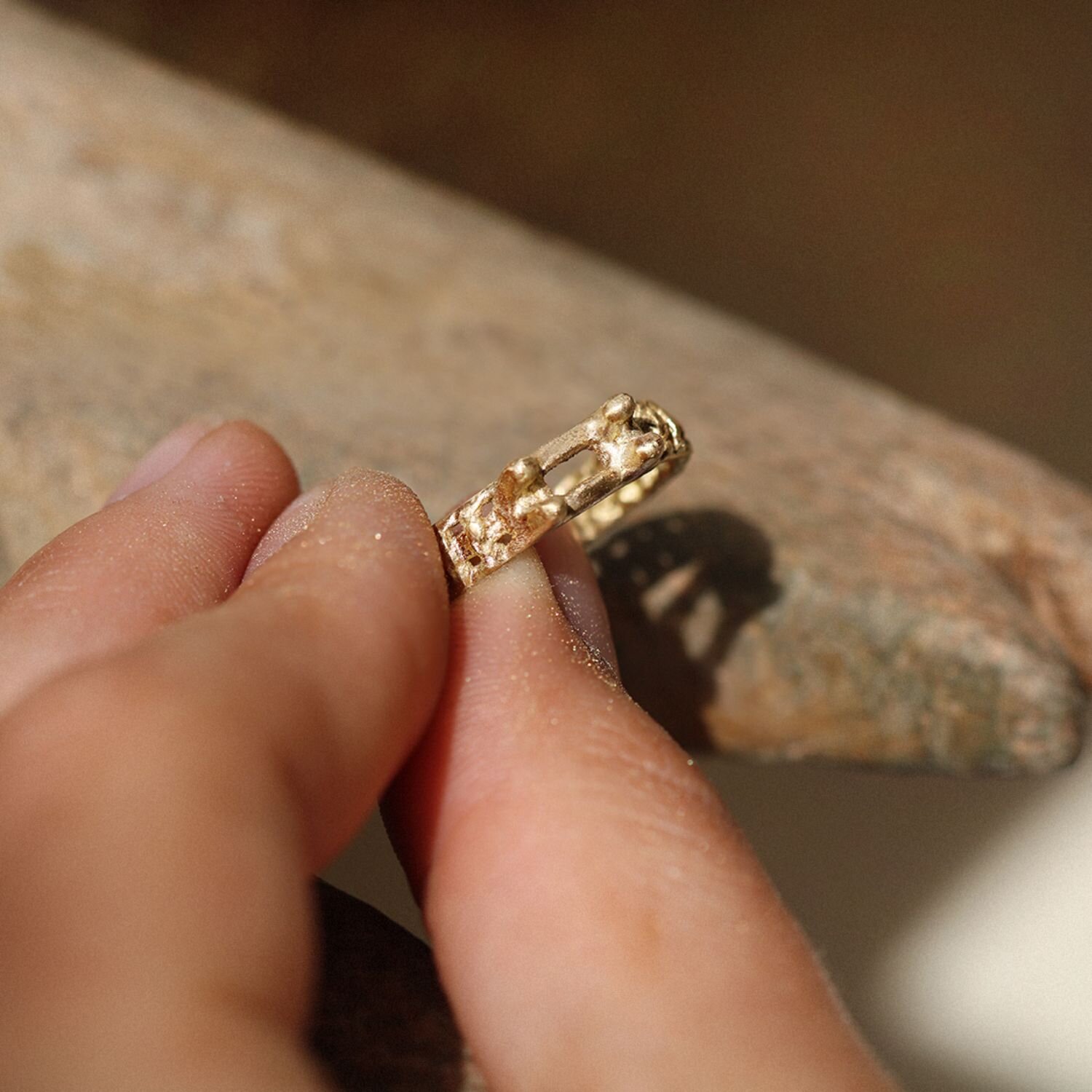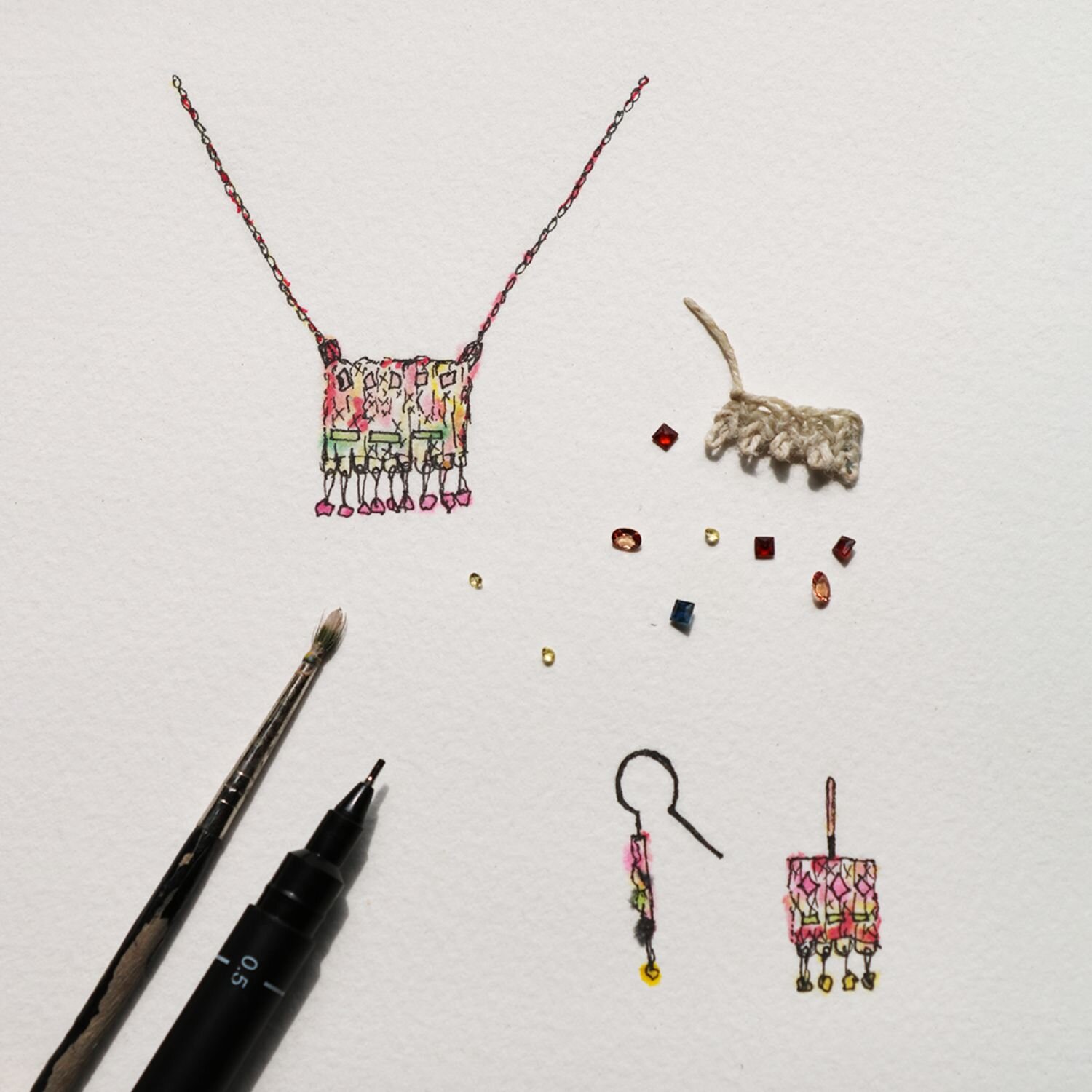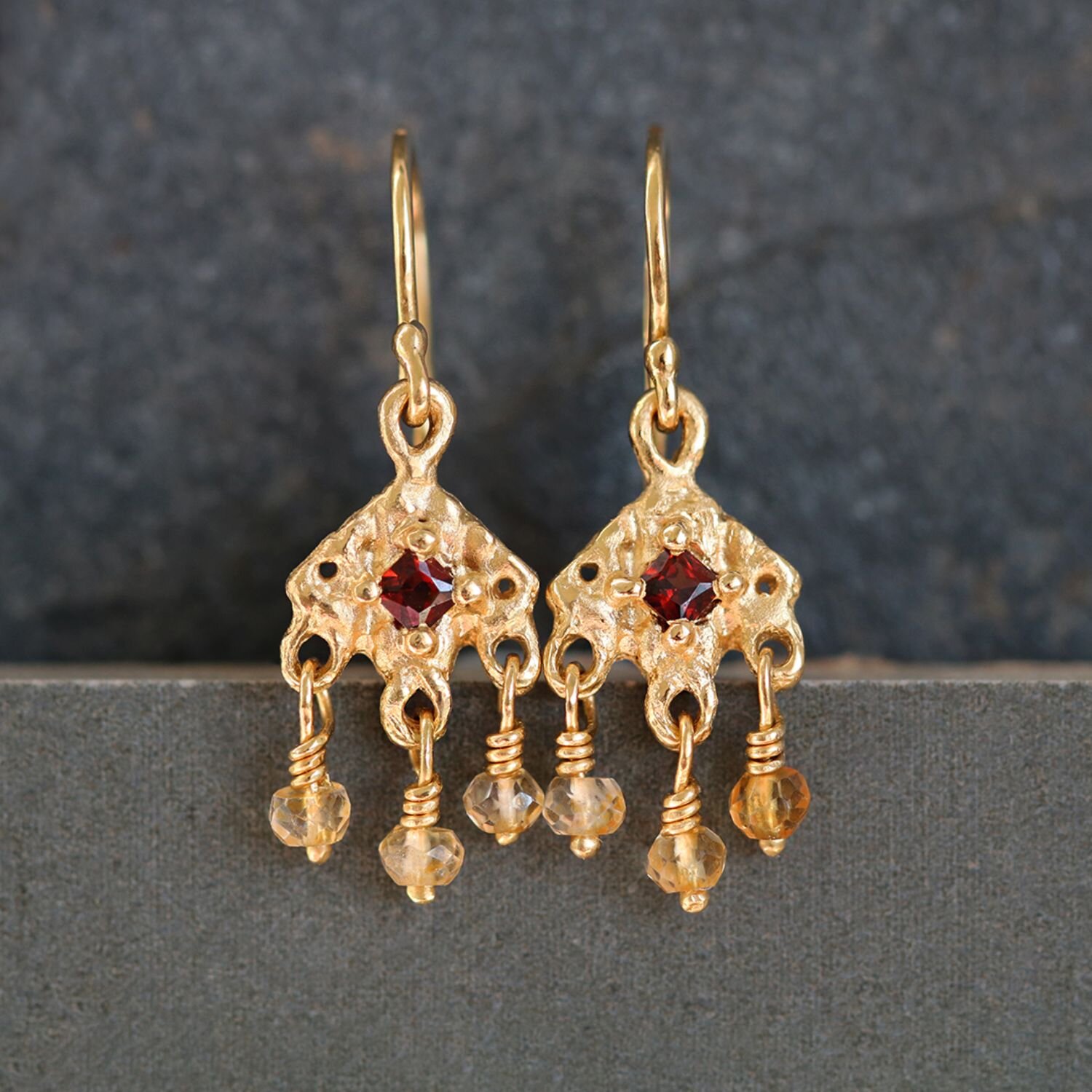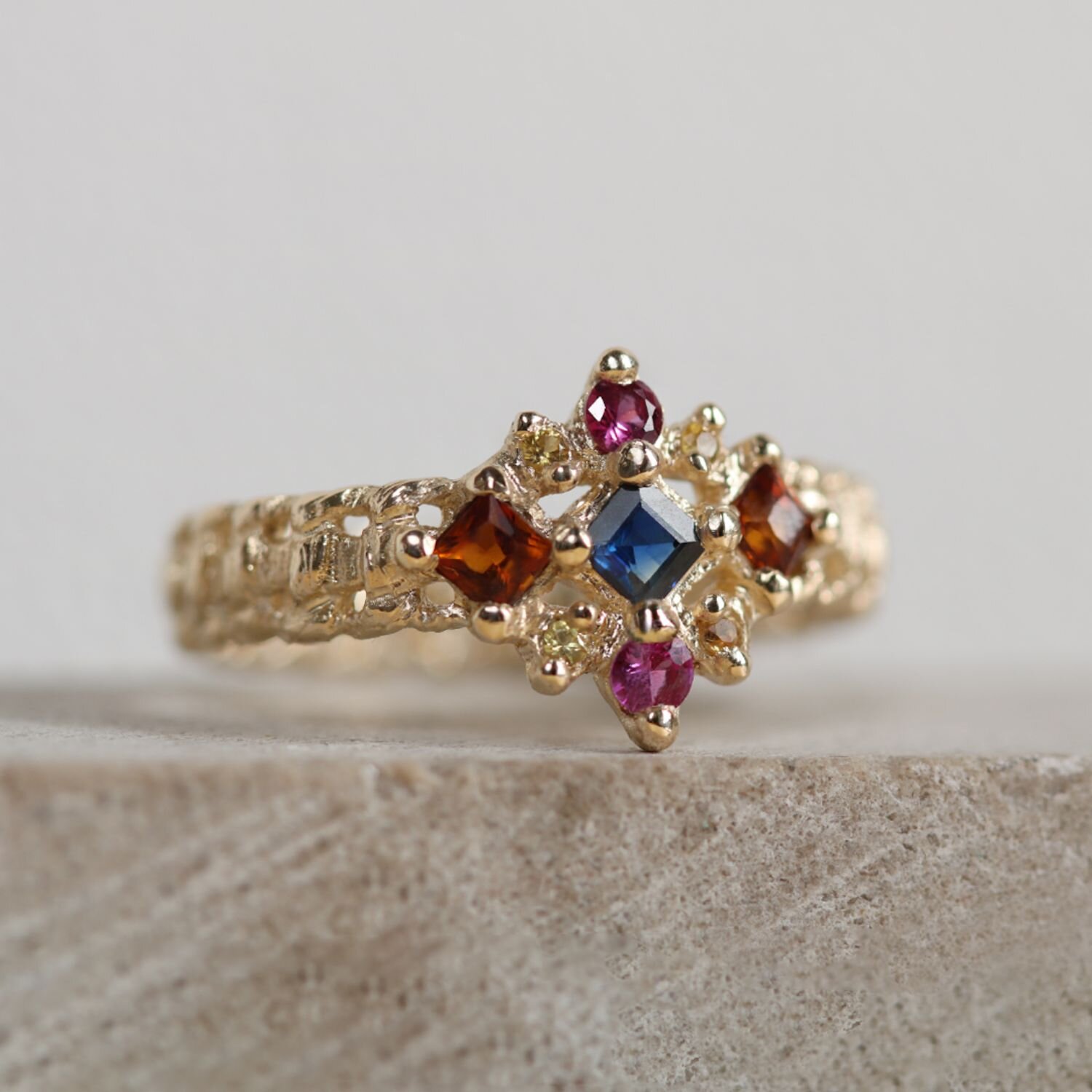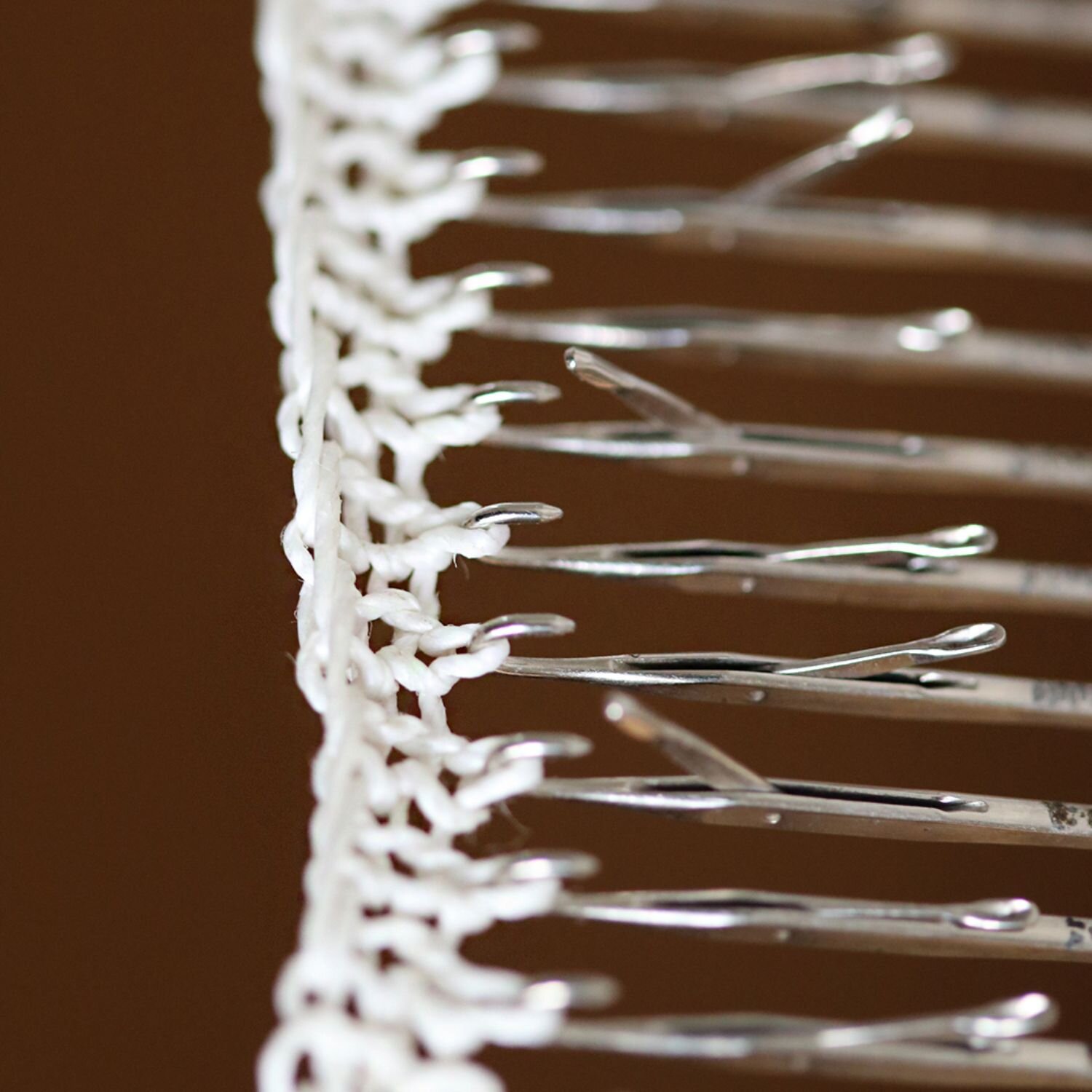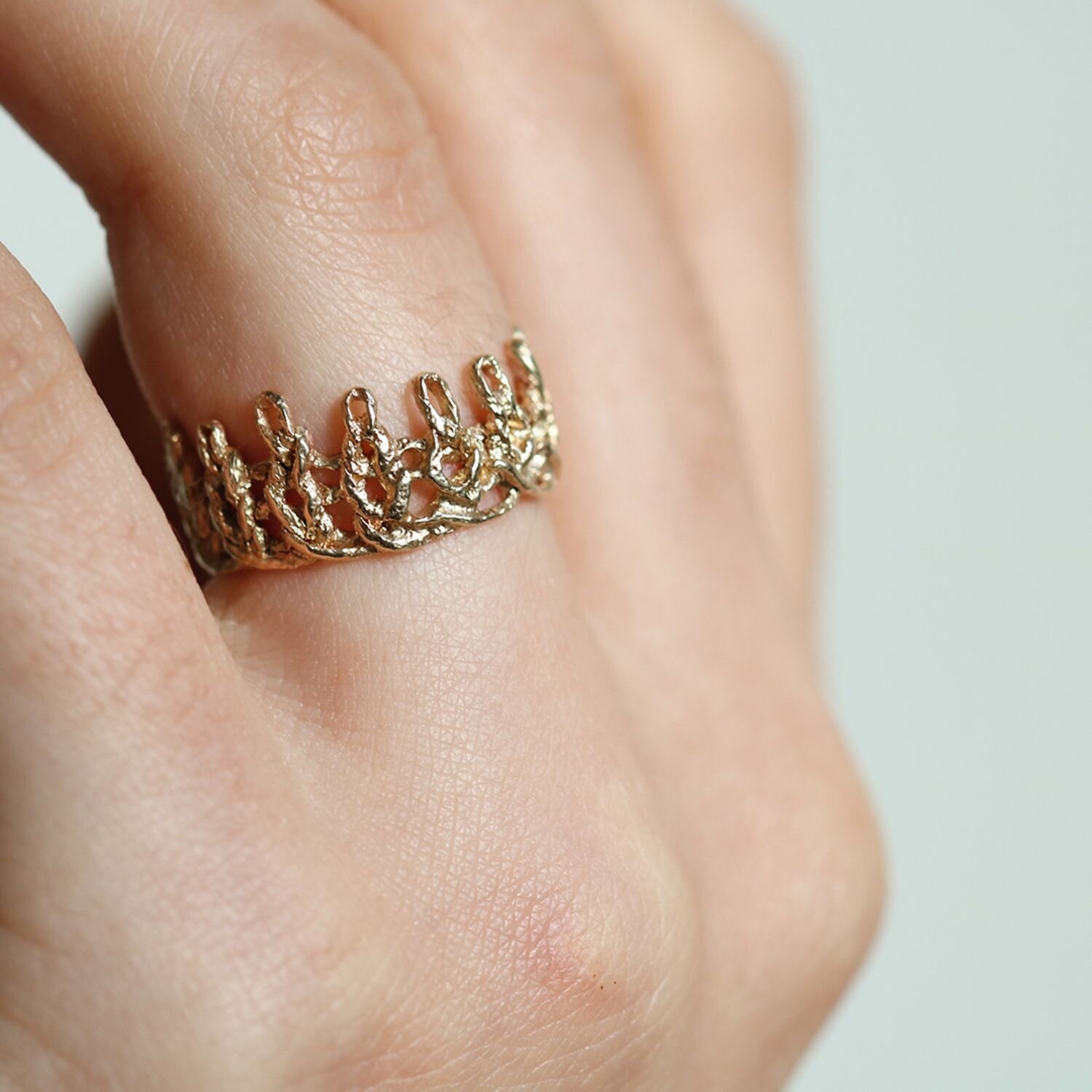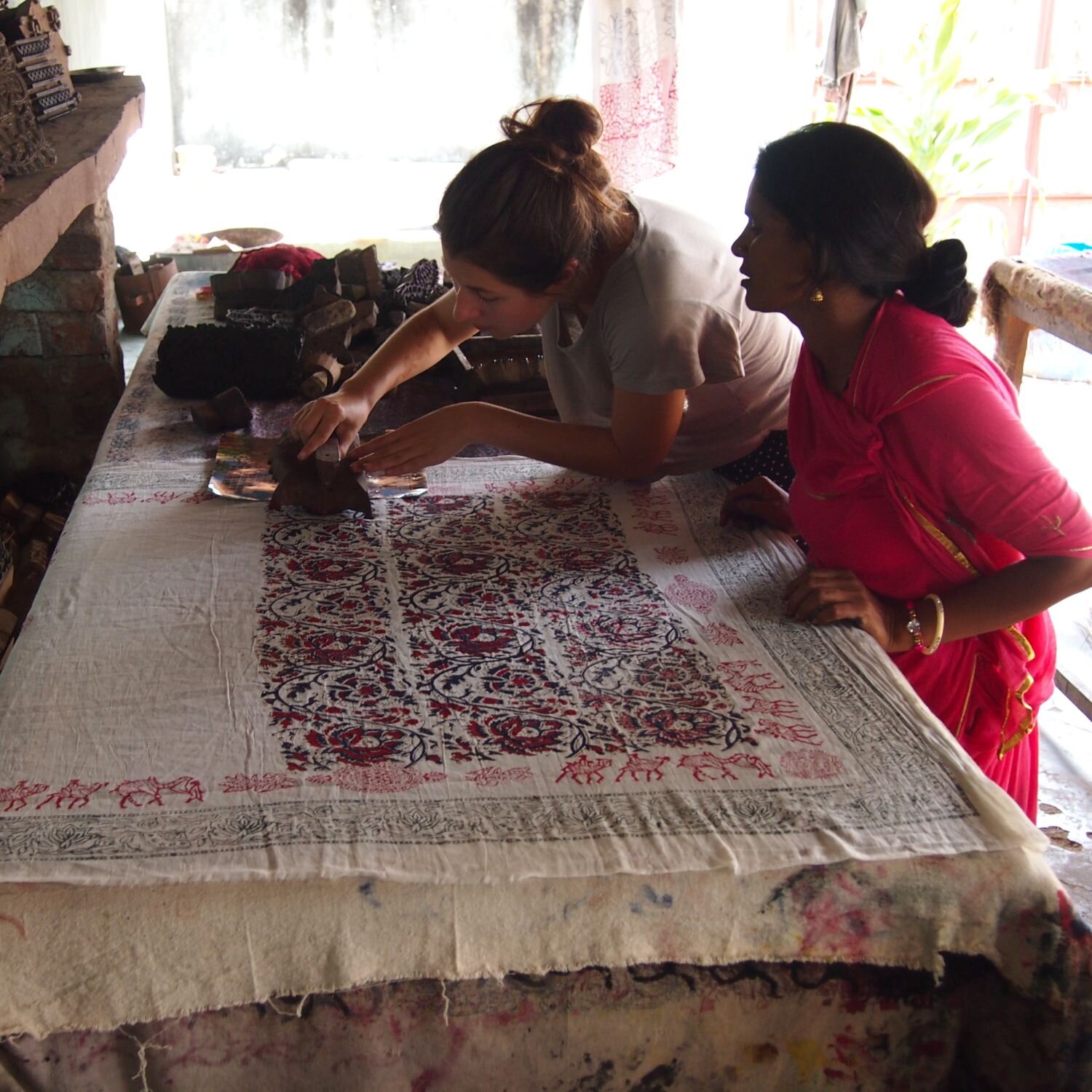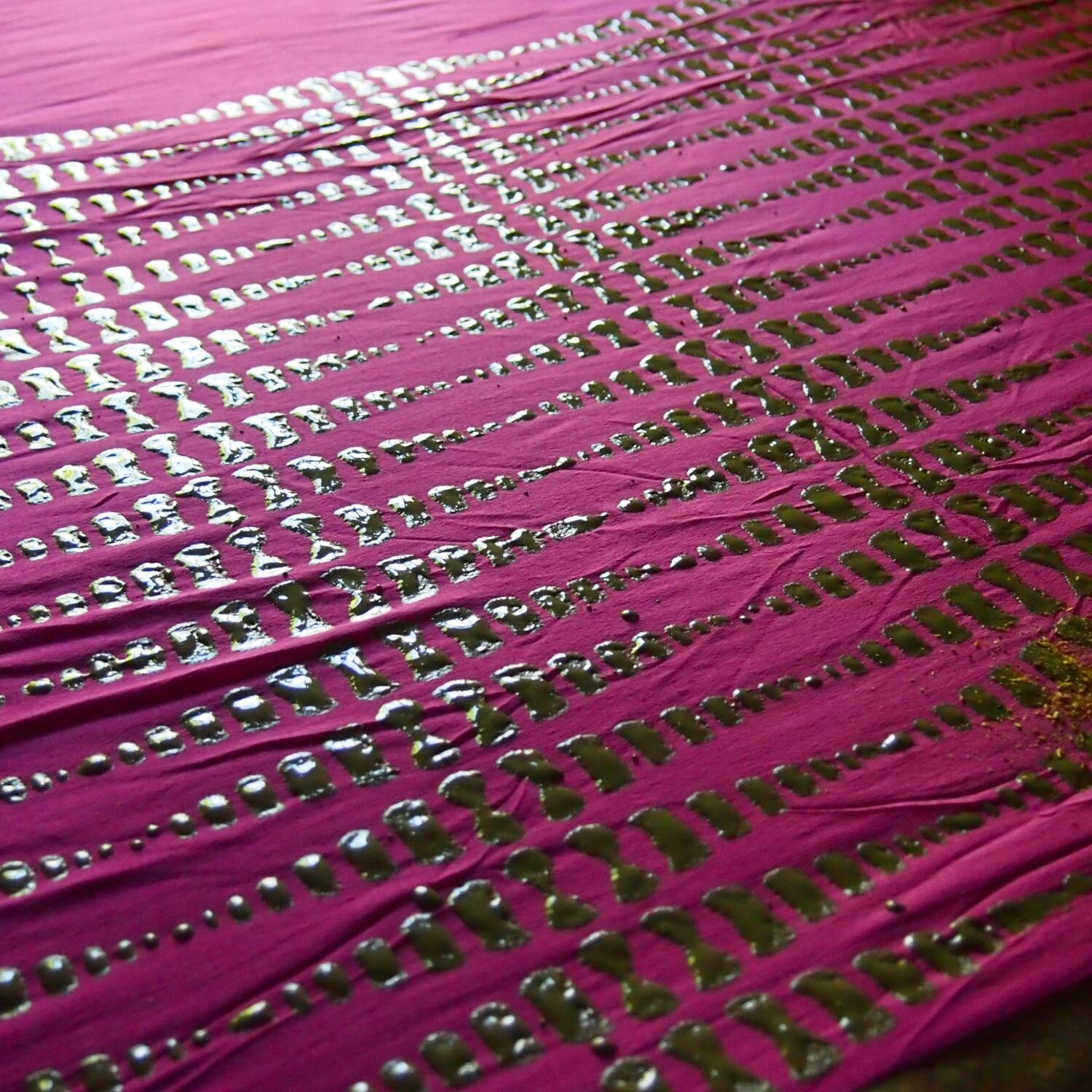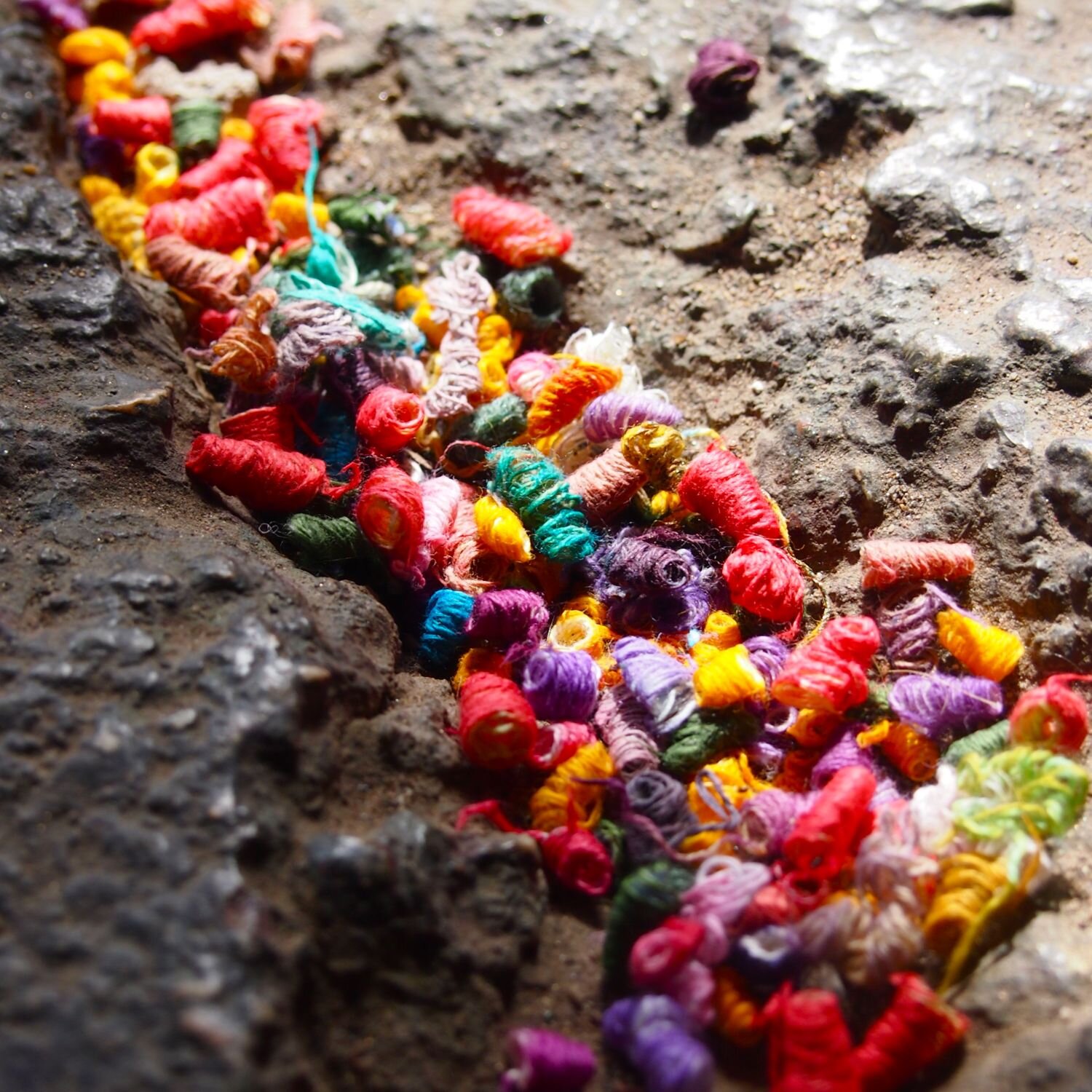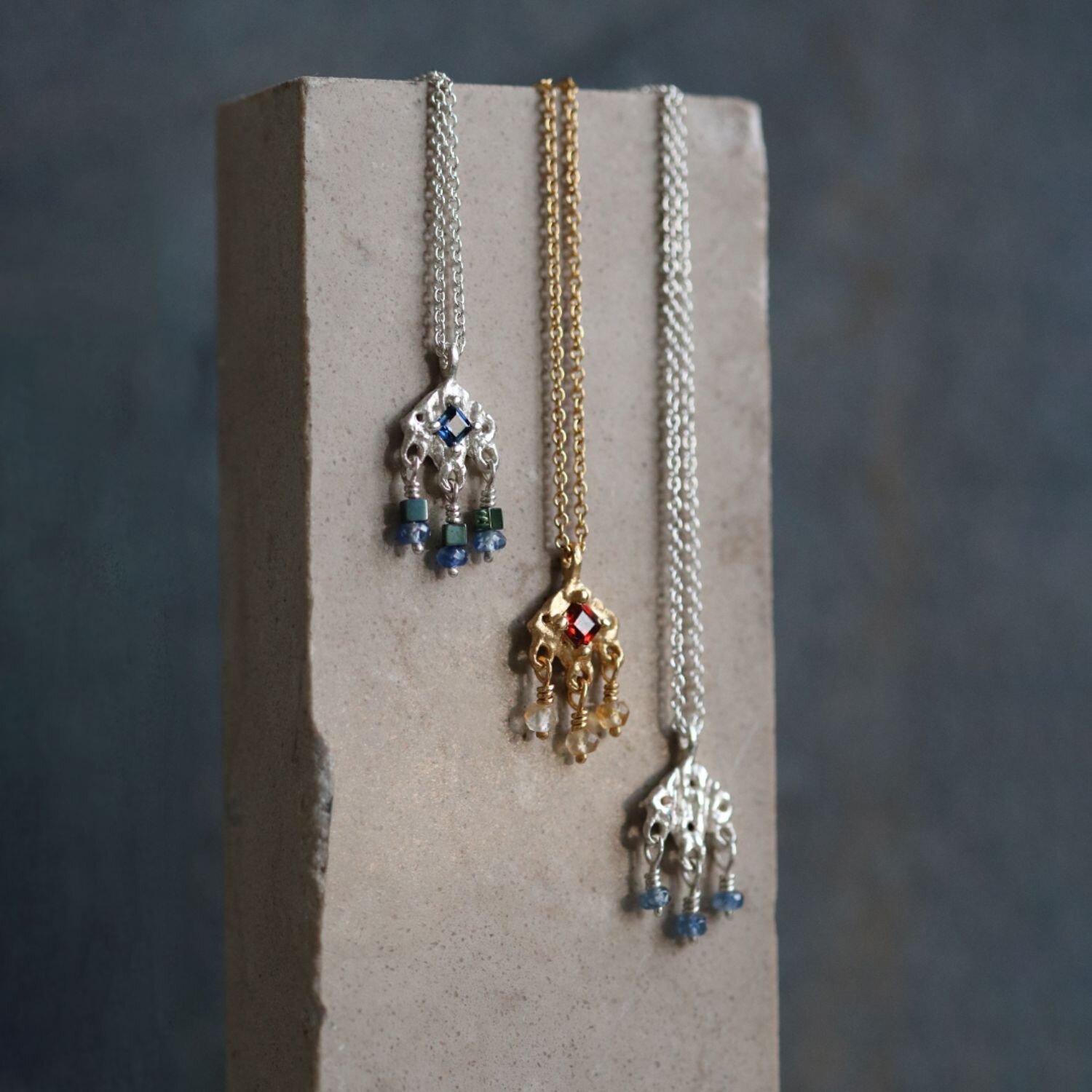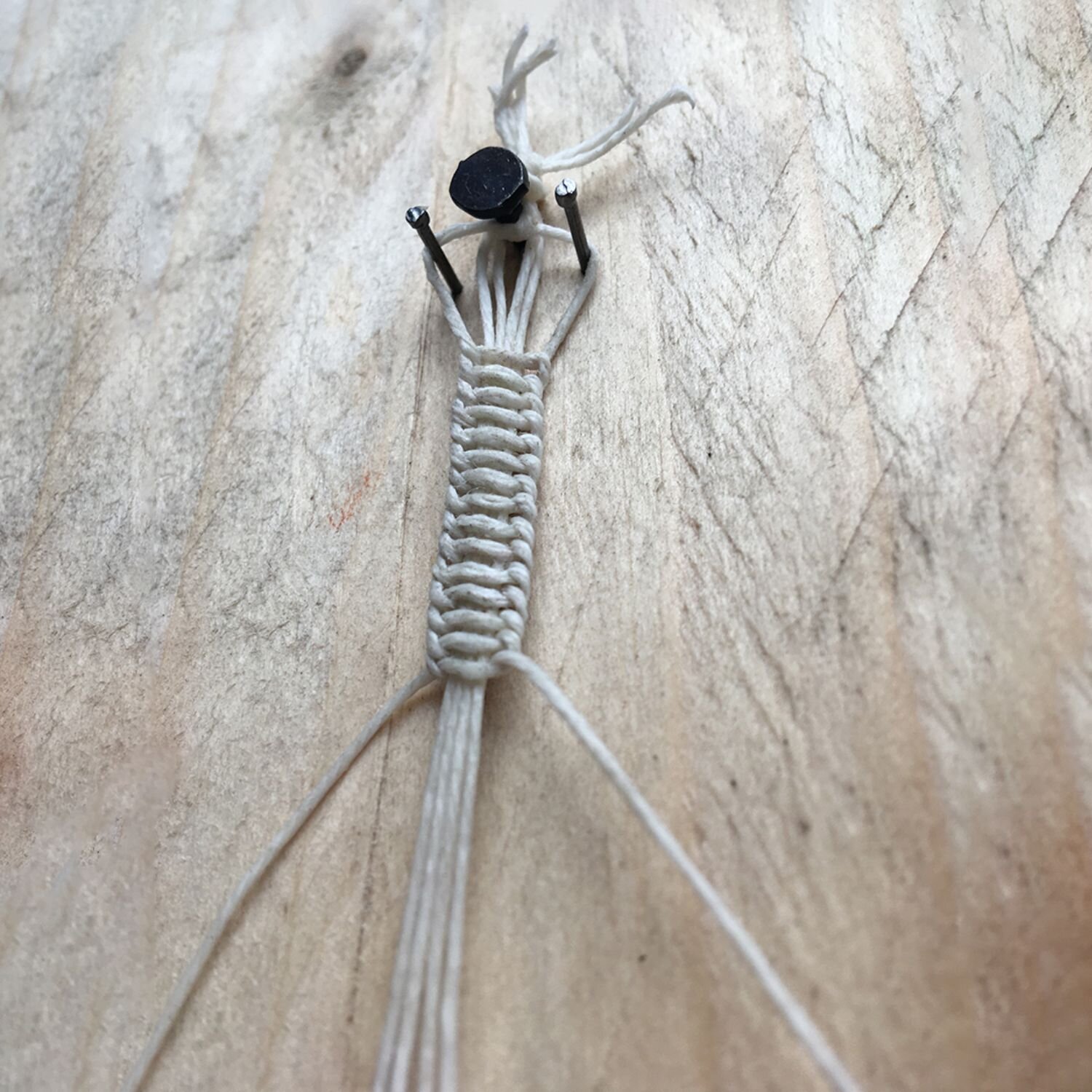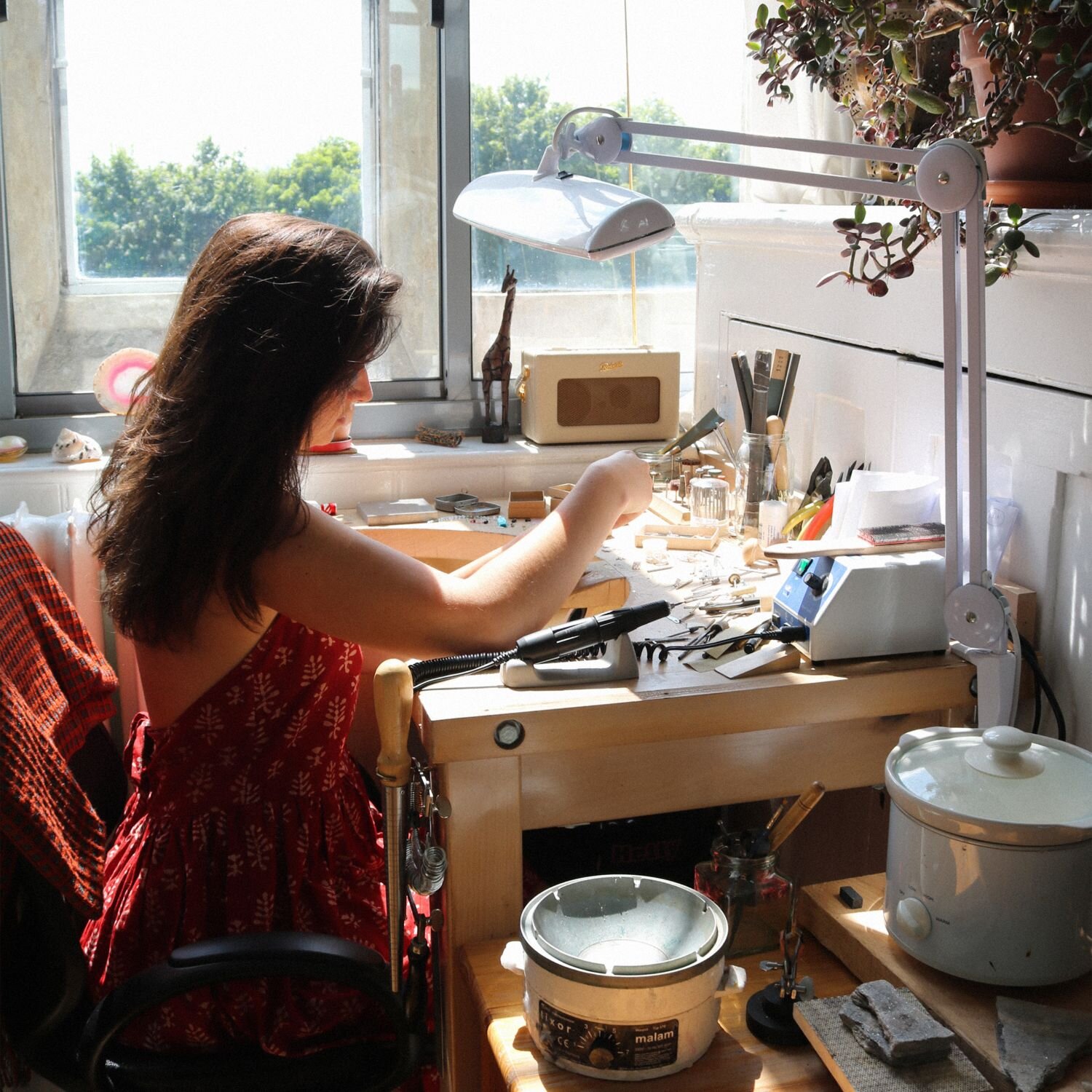Rosalyn Faith
One of the most exciting aspects of Elements each year is supporting a new group of emerging designer-makers. These designer-makers come from a range of backgrounds and specialities, but are all in their first five years of business. We are thrilled to share with you some of the inspiration behind their work and insight into their techniques and practice.
Rosalyn Faith Crosthwaite’s jewellery derives from her passion for constructing textiles using the timeless techniques of knitting, weaving and twists. Rosalyn transforms her textiles into precious metals, bringing a sculptural element to the material. These elements are then assembled and embellished with precious and semi-precious stones, creating movement, intricacy and culminating in delicate, wearable jewellery pieces.
Describe your journey to becoming a maker.
My journey to becoming a jewellery maker was a little longer than others perhaps. I studied my degree in textile design in the east of England and being a lover of colour and pattern I chose to specialise in material construction, specifically in knitting. Throughout my degree I became more and more enchanted by metal and began using wires and metallic materials to create sculptural textiles which then became the main body of my degree work. After I finished my course alongside jobs, work experience and internships I decided to study a short course in contemporary jewellery design in Bristol. Learning jewellery making techniques enabled me to combine my textiles with metal work to create my vision of wearable pieces. Following this, I was lucky enough to start working for a contemporary jeweller where I was able to learn and develop my techniques to a high standard.
How does your process of creating a new piece begin?
New work for me often starts with a stitch or a textile structure that knits, twists or weaves. I play with the form to create composition and start thinking about a stone shape and colour. I play with materials to see how pieces might work and choose metals to cast into. For commissions, the customer would be involved at every stage of the process, ensuring the design was in line with their vision.
What has the past year been like for you? How have you developed your skills and continued to make?
At points over the past year I have struggled, especially at the start of the pandemic when everything seemed so uncertain. Staying positive was difficult and finding the motivation to keep making was tricky. In the end, I managed to push through using my practise as my focus, this in turn made me realise the importance of making for many creatives. I moved my studio home so I could continue to work safely day or night. A large proportion of pieces I’m displaying in this show were created throughout this period.
Where do you draw your inspiration from?
I find inspiration all over; I am drawn to textures, colours and surfaces often found within the natural environment.
I am very inspired by organic patterning and colour. In my work nothing is too precise, it’s not always perfectly symmetrical but balance is important. I am interested in the use of traditional fabrics from around the world. These textiles are a huge part of cultural identity, commonly inspired by the surrounding environments, using locally sourced natural dyes to colour the fabrics and taking influence from patterns. Some fabrics depict incredibly detailed scenes using imagery in order to tell a story. These fabrics are works of art often created by women with a high level of skill, time and care, passed through generations and creating social community.
This interest feeds into my practise through pattern, texture and colour. To me the world of textiles and jewellery are so closely related, they’re an extension of one another with some simple differences in materials, techniques and application.
What technique do you use most often while making? What interests you about this technique?
Currently, I am enjoying using weaves to develop structures I then base my designs around. This lends itself so naturally to a curve which can wrap around the body, for example; in the use of a ring or earrings. I love making textiles such as these due to the pieces being double sided so the patterns are both internal and external creating fluidity.
How does material choice influence your work and the pieces you create?
I often work quite organically in my response to the materials. The yarn structures are very malleable with a lot of room for movement enabling me to experiment and play with shapes easily. When it is later transformed into metal it becomes a solid object so it is integral in many pieces to re-capture some movement by adding elements such as gemstones and beads, especially in earrings and necklaces.
What is next for you this year?
I hope to continue learning and experimenting with new ideas and designs while meeting with clients and makers who share similar passions and interests. I hope to undertake some exciting new commissions and projects and look forward to continuing research and development into more ethical and sustainable ways of mindfully making throughout my business.
What are your career highlights so far?
Through my short career so far I have been lucky enough to have received a bursary award from Diana Porter Contemporary Jewellery, created to support new designers. I was also incredibly fortunate to have had solo exhibition in Diana’s gallery in Bristol.
Other highlights would be forming relationships with clients and suppliers to make beautiful bespoke items of jewellery that hold great sentiment.
What does taking part in Elements mean to you?
Elements is my first ever show alongside other jewellers and silversmiths so it is very exciting for me. It has taken a while to get to this point where I feel ready to exhibit to a wider audience. I really look forward to meeting new customers and other talented makers and jewellers also taking part.

